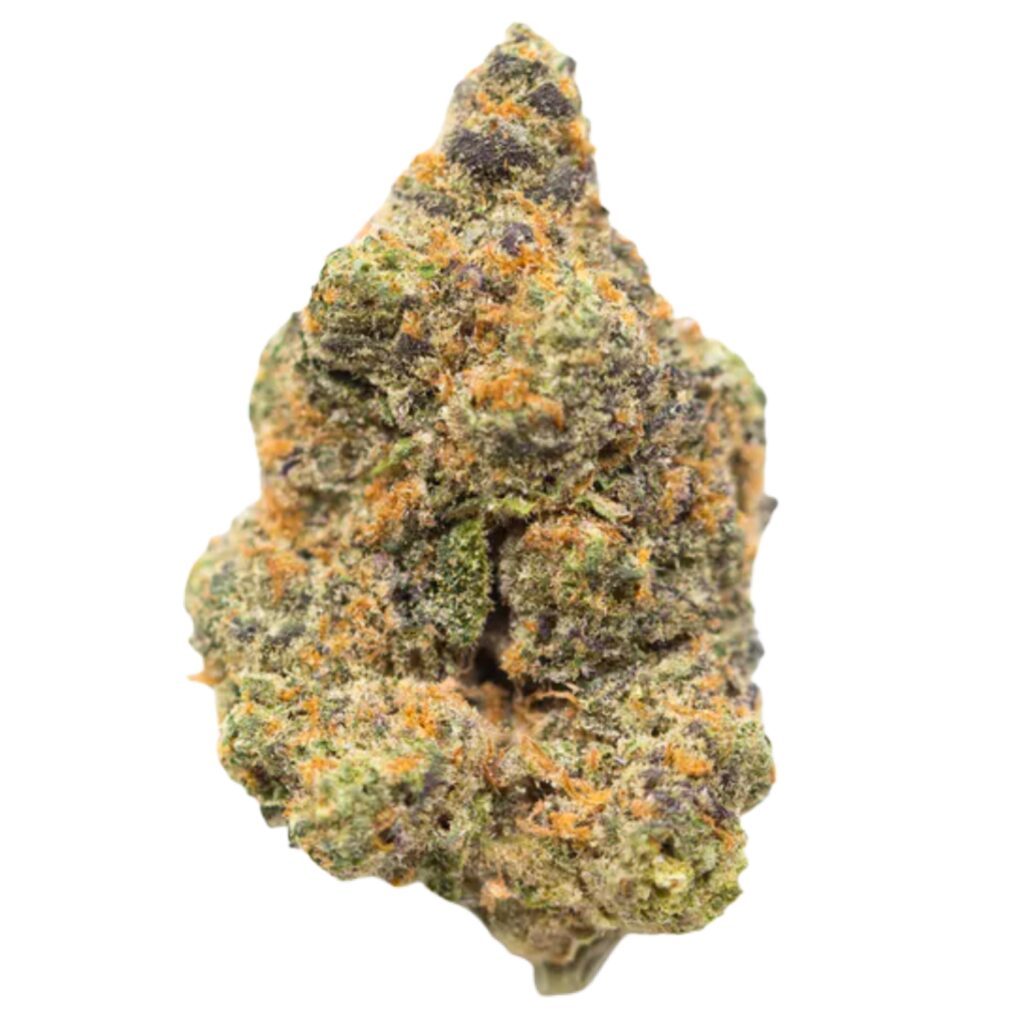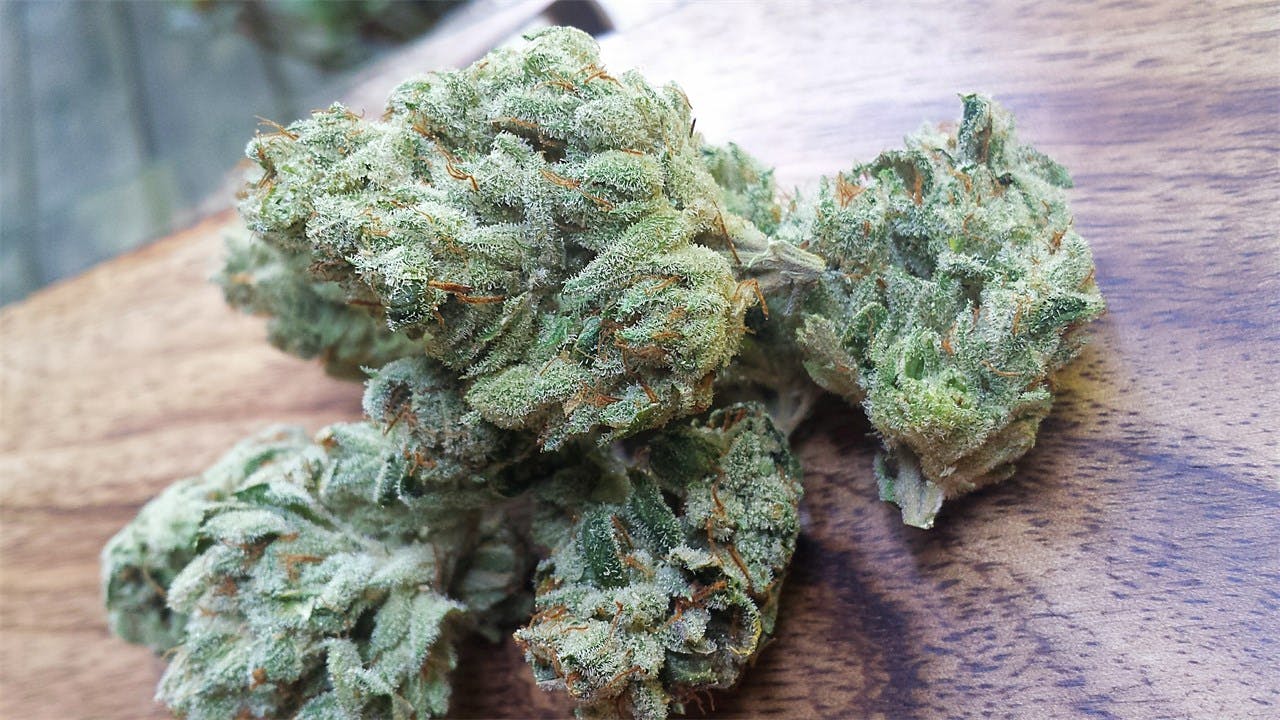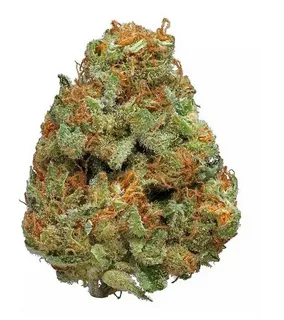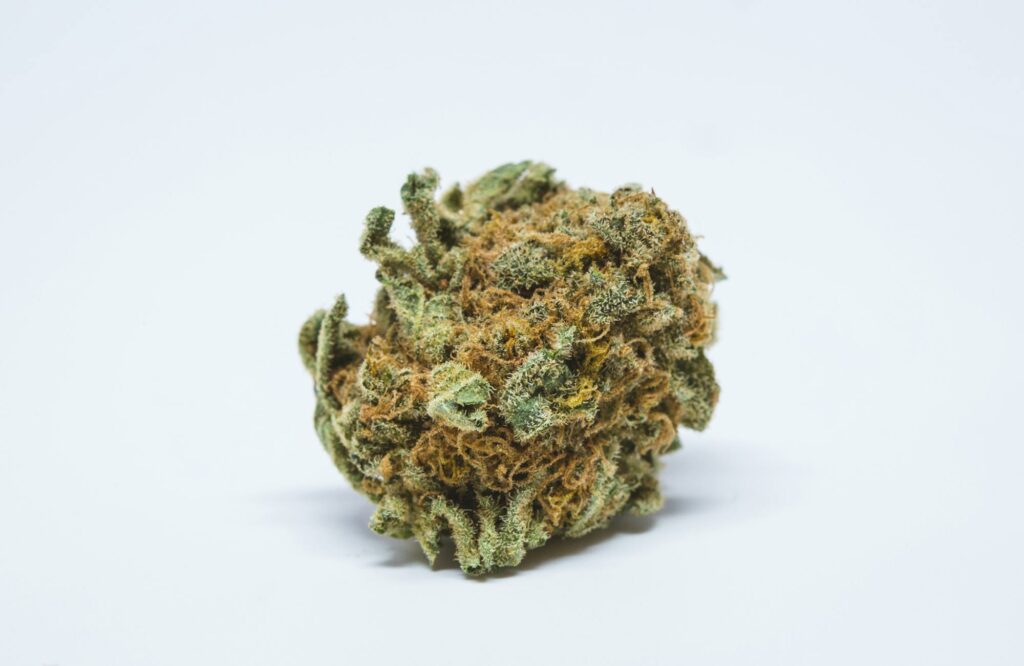Origins and Genetics
Cannabis Variety
The origins of cannabis can be traced back thousands of years to Central Asia, where it was first cultivated and used for medicinal, spiritual, and recreational purposes. The plant’s genetic makeup has undergone significant changes over time through selective breeding, leading to the vast array of varieties we see today.
Casey Jones is a strain of cannabis that gets its name from the train conductor who was famous for being a hero on his last day of work before he died in 190 The story goes that Casey Jones had predicted that he would die in a train wreck, and indeed it happened just as he had foretold.
This strain is said to have originated from a combination of Afghani and Jamaican genetics, making it a hybrid with a distinct effect profile. It is known for its high THC content and is often used by patients seeking relief from chronic pain, anxiety, and stress.
Cannabis varieties like Casey Jones are classified into several categories based on their genetic makeup: indica, sativa, and hybrid. Indica strains typically have higher levels of CBD and lower levels of THC, producing a more sedating effect, while sativa strains have higher levels of THC and are known for their energizing effects.
The exact genetics of Casey Jones are not publicly disclosed, but its effects suggest that it has a strong indica presence. Patients who try this strain often report feeling relaxed and calm, with some even experiencing pain relief and improved sleep quality.
Geneticists have identified several key genes involved in the development of cannabis varieties: CB1 and CB2 receptors, THC synthase, and CBD synthase. These genes interact with each other to produce the unique effect profiles we see in different strains.
The study of cannabis genetics is an active area of research, with scientists seeking to understand how the plant’s genetic makeup influences its effects on humans and animals. As more is discovered about the genetics of cannabis, it may become possible to engineer new varieties with specific characteristics, such as higher levels of CBD or THC.
For now, Casey Jones remains a popular strain among cannabis enthusiasts, prized for its potent effects and ability to provide relief from various health conditions. Its unique genetic makeup sets it apart from other varieties, making it a standout in the world of cannabis strains.
Casey Jones is a cannabis strain that has gained popularity due to its unique characteristics, including its sweet and earthy flavor profile.
Cannabis strains have been a part of human culture for thousands of years, with evidence of cannabis use dating back to ancient civilizations in Asia and Europe.
The origins of specific cannabis strains like Casey Jones are often unclear, as the history of cannabis cultivation and breeding is complex and not well-documented.
However, it’s generally believed that modern cannabis strains have been developed from a combination of wild cannabis plants and landrace varieties that were brought back to North America by travelers and traders.
Over time, breeders have selectively bred these plants for desirable traits such as potency, flavor, and yield, resulting in the diverse array of strains available today.
Casey Jones, also known as Casey Weed, is a popular cannabis strain that has gained widespread recognition due to its unique characteristics and effects.
The exact genetic makeup of Casey Jones is unknown, but it’s believed to be a hybrid strain that combines elements of both indica and sativa plants.
Hybrid strains like Casey Jones are often created by breeding two parent strains together in an effort to produce offspring with desirable traits such as high potency and a balanced effect.
The genetic makeup of a cannabis plant is determined by the combination of its parent strains and can be influenced by factors such as terpene and cannabinoid profiles, growth habits, and yield.
Casey Jones is known for its sweet and earthy flavor profile, which is often accompanied by notes of spice and herbs.
The strain’s effects are said to be balanced, with users reporting a mix of relaxation and stimulation that can help with pain relief, stress reduction, and increased creativity.
Overall, Casey Jones is just one example of the many unique cannabis strains available today, each with its own distinct characteristics and effects.
Potency
The origin of Casey Jones, also known as Casey Weed, is not well-documented, but it is believed to have originated from a breeder in the United States.
This strain is a hybrid of unknown genetics, making its exact parentage difficult to determine.
However, based on its effects and appearance, it is thought to be a cross between an indica-dominant strain and a sativa-dominant strain.
Potency
The potency of Casey Jones varies depending on the batch and the growing conditions, but it typically has a THC content ranging from 15% to 25%.
This is considered average to high potency for most cannabis strains.
Genetics
Unknown Genetics
The exact genetics of Casey Jones are not known, making it difficult to determine its parentage or predict its effects with certainty.
Breeders often keep the genetics of their strains proprietary to maintain an edge in the competitive cannabis market.
Potential Parent Strains
Indica-dominant strain (potential mother)
- Kush or Afghan Kush for its earthy, sedative effects
- Northern Lights or Blueberry for their calming and relaxing properties
Sativa-dominant strain (potential father)
- Jack Herer or Green Crack for their energizing and uplifting effects
- Sour Diesel or Chemdawg for their pungent aroma and mood-boosting properties
Please note that these are educated guesses, and the actual parent strains may be entirely different.
As reported by the University of Mississippi’s marijuana potency study, Casey Jones is known for having an average THC level of 19%.
The origins of Casey Jones, also known as Casey Weed, are shrouded in mystery. However, one thing that is known about this strain is its impressive THC content, with an average level of 19% as reported by the University of Mississippi’s marijuana potency study.
While there isn’t much information available on the exact origins of Casey Jones, it is believed to be a indica-dominant hybrid strain. This means that it is likely to produce a strong body high and can be effective in treating conditions such as pain, inflammation, and anxiety.
The genetics of Casey Jones are also not well documented, but it is thought to be a cross between two other strains. Unfortunately, the exact parentage of Casey Jones remains a mystery, which has led some to speculate about its true origins.
Despite the lack of information on its origins and genetics, Casey Jones has become a popular strain among marijuana enthusiasts due to its high THC content and indica-dominant properties.
In terms of growing characteristics, Casey Jones is said to have a medium to large stature and can produce dense buds. It is also known for its pungent aroma and flavor, with notes of earthy sweetness and herbal undertones.
When it comes to medical applications, Casey Jones has been shown to be effective in treating a range of conditions, including chronic pain, insomnia, and anxiety disorders. Its high THC content also makes it a popular choice for patients seeking relief from severe pain and inflammation.
Cannabinoid Profile
Terpenes
Cannabinoids are the primary compounds found in cannabis plants and are responsible for their psychoactive and medicinal effects. The cannabinoid profile of a specific strain, such as Casey Jones, can vary depending on factors like genetics, growing conditions, and harvesting methods.
Casey Jones is a popular strain known for its high THC content, typically ranging from 18-22%. THC (tetrahydrocannabinol) is the primary psychoactive cannabinoid responsible for producing euphoria and altered perception. The exact THC content can vary depending on how the plant was grown and processed.
Other cannabinoids found in Casey Jones include CBD (cannabidiol), CBG (cannabigerol), and CBC (cannabichromene). These cannabinoids have been shown to have potential medicinal benefits, such as reducing inflammation and alleviating pain. The balance between THC and other cannabinoids can affect the strain’s overall effects.
Terpenes are a class of organic compounds found in cannabis plants and other botanicals. They contribute to the plant’s unique aroma and flavor profiles. In Casey Jones, you might notice terpenes like myrcene, limonene, and beta-caryophyllene.
Myrcene has a sweet, earthy aroma and is often associated with relaxation and sedation. Limonene has a citrusy scent and may contribute to the strain’s mood-enhancing effects. Beta-caryophyllene has a woody or spicy aroma and may have anti-inflammatory properties.
The combination of cannabinoids and terpenes in Casey Jones creates a unique profile that affects each individual differently. This variability is due to the complex interactions between these compounds and their receptors in the human body.
This strain features a combination of terpenes including myrcene, pinene, and limonene.
The Casey Jones, also known as the Casey Weed strain, boasts a complex and intriguing cannabinoid profile that makes it an attractive option for cannabis enthusiasts.
At its core, this strain features a balanced blend of cannabinoids, including THC (tetrahydrocannabinol) and CBD (cannabidiol). The THC content typically ranges from 18-22%, which is moderate to high. This makes Casey Jones a great choice for those seeking the benefits of cannabis without feeling overwhelmed by intense psychoactive effects.
The strain’s CBD content, on the other hand, is relatively low, usually falling between 5-5%. While this may not be sufficient for individuals relying on CBD for therapeutic purposes, it can still contribute to the overall well-being of users when consumed in combination with THC.
One of the most notable aspects of Casey Jones is its terpene profile, which consists of myrcene, pinene, and limonene. Myrcene contributes a pungent, earthy aroma that sets the tone for the strain’s overall character. Pinene adds a hint of freshness and pine-like notes to the blend, while limonene introduces citrusy undertones.
Together, these terpenes create an aromatic experience that complements the strain’s cannabinoid profile beautifully. The combined effect is a balanced yet potent cannabis strain that offers users a unique experience with every draw.
The therapeutic benefits of Casey Jones are also worth exploring. While its CBD content may not be substantial, the THC and terpene blend can still provide relief from stress, anxiety, and muscle tension. Some users have reported improved focus, increased appetite, and even enhanced creativity when using this strain.
When trying Casey Jones for the first time, remember that individual tolerance and sensitivities will vary greatly. It’s essential to start with a low dose and gradually increase as needed to find your optimal comfort level.
In conclusion, the Casey Jones is an excellent choice for those seeking a well-rounded cannabis experience. Its balanced cannabinoid profile, complex terpene blend, and relatively high THC content make it a great option for recreational users or those looking for therapeutic benefits without excessive psychoactive effects.
Main Cannabinoids
The cannabinoid profile of the Casey Jones strain, also known as Casey Weed, is a complex and fascinating aspect of this popular cannabis variety.
At its core, the main cannabinoids present in Casey Jones are the quintessential building blocks responsible for producing its effects.
CBD (Cannabidiol) is one of the primary cannabinoids found in Casey Jones, contributing to its therapeutic potential without inducing psychoactive effects.
CBDA (Cannabigerolic Acid), a precursor to CBD and other cannabinoids, is also present in Casey Weed, demonstrating its immature and developing stages.
THCA (Tetrahydrocannabinolic Acid) is another prominent cannabinoid found in Casey Jones, with potential anti-inflammatory and pain-relieving properties.
Tetrahydrocannabinol (THC), the most well-known psychoactive cannabinoid, is also present in varying concentrations depending on factors like growth conditions and processing methods.
CBG (Cannabigerol) and CBGA (Cannabigerolic Acid) contribute to the entourage effect, working together with other cannabinoids to amplify each other’s benefits.
The presence of these main cannabinoids in Casey Jones highlights its unique profile and suggests a range of therapeutic potential, from pain management to mood enhancement.
As research continues to uncover more about the complex relationships between cannabinoids and their effects on human physiology, strains like Casey Jones offer valuable insights into the possibilities offered by this incredible plant.
The main cannabinoids present in Casey Jones include THC, CBD, CBG, and CBC.
The cannabinoid profile of a cannabis strain like Casey Jones, also known as Casey Weed, is a crucial aspect to understand its effects and potential therapeutic benefits.
Cannabinoids are the primary compounds found in the cannabis plant that interact with the human body’s endocannabinoid system (ECS) to produce various physiological and psychoactive responses. The main cannabinoids present in Casey Jones include Tetrahydrocannabinol (THC), Cannabidiol (CBD), Cannabigerol (CBG), and Cannabichromene (CBC).
THC is the primary psychoactive component of cannabis, responsible for producing feelings of euphoria and altered perception. It has been found to have analgesic, anti-inflammatory, and appetite-stimulating properties.
CBD is a non-psychoactive compound that has gained significant attention in recent years for its potential therapeutic benefits, including reducing inflammation, anxiety, and stress. CBD has also been shown to have neuroprotective effects and may help mitigate symptoms of epilepsy and other neurological disorders.
CBG, on the other hand, is a non-psychoactive cannabinoid that has been found to have potential therapeutic benefits for conditions such as inflammatory bowel disease (IBD) and multiple sclerosis. CBG has also been shown to have antibacterial properties and may help reduce the growth of certain types of bacteria.
CBC is another non-psychoactive cannabinoid that has been found to have analgesic, anti-inflammatory, and antimicrobial properties. It may also help reduce anxiety and stress levels in individuals who consume it.
The ratio of THC to CBD and other cannabinoids can significantly impact the effects and potential therapeutic benefits of Casey Jones strain. A high-THC strain like Casey Jones may produce intense psychoactive effects, while a lower-THC strain with higher levels of CBD or CBG may be more suited for individuals seeking relief from pain, anxiety, or inflammation without the psychoactive effects.
In summary, understanding the cannabinoid profile of Casey Jones and other cannabis strains can help individuals make informed decisions about their use and potential therapeutic benefits. Further research is needed to fully explore the effects and benefits of these compounds, but current evidence suggests that they may have a significant impact on various aspects of human health and well-being.
Cultivation and Effects
Effects
Cultivation and Effects
The Casey Jones, also known as the Casey Weed strain, is a popular cannabis variety that has gained widespread recognition for its unique characteristics and effects.
Cultivating this strain can be a challenging but rewarding experience for growers.
Here are some key considerations:
-
- Humidity: Casey Jones prefers a relatively high humidity level, typically between 60-80%.
- temperature: the ideal temperature range for growth is between 65°f and 75°f (18°c 24°c).
- Lighting: This strain requires sufficient light to thrive, with a minimum of 400W per square meter being recommended.
After the growing process is complete, the effects of Casey Jones can be observed in both its physical and psychoactive properties:
-
- CBD Content: This strain contains a significant amount of CBD, which contributes to its therapeutic benefits.
-
- THC Levels: The THC levels are moderate, ranging from 12-20%, making it suitable for those seeking a balanced effect.
- Euphoric Effects: Casey Jones is known for inducing feelings of euphoria and relaxation, which can last for several hours after consumption.
-
- Physical Relaxation: The strain’s ability to promote physical relaxation makes it an excellent choice for those suffering from muscle tension or stress-related issues.
The Casey Jones is a versatile strain that caters to a wide range of preferences, offering both therapeutic and recreational benefits. Its unique combination of characteristics makes it an attractive option for growers and consumers alike.
Casey Jones has been reported to provide a balanced high that can range from relaxed to euphoric.
Cultivation and Effects: A Comprehensive Overview of Casey Jones
Casey Jones, also known as Casey Weed, is a popular cannabis strain that has gained significant attention in the medical marijuana community.
The effects of Casey Jones are often described as balanced, meaning it can induce both relaxation and euphoria depending on the individual’s tolerance and dosage.
Here are some key characteristics of the Casey Jones strain:
- Euphoric Effects: Casey Jones is known to produce a feeling of happiness and elation, often accompanied by increased creativity and energy levels.
- Relaxing Properties: The strain’s relaxing effects can help alleviate stress, anxiety, and muscle tension, making it an excellent choice for individuals looking to unwind after a long day.
- Mild Pain Relief: Casey Jones is reported to offer mild pain relief, making it suitable for patients suffering from chronic pain conditions.
Growers who cultivate the Casey Jones strain report that it grows relatively fast and can reach maturity within 7-9 weeks.
The plant typically exhibits a moderate yield, producing dense buds with an earthy aroma and hint of spice.
The terpene profile of Casey Jones is characterized by its high concentrations of myrcene, limonene, and pinene, contributing to its unique flavor and aroma.
Cultivation Difficulty
The Casey Jones strain is a potent indica-dominant hybrid that has gained popularity among cannabis enthusiasts due to its unique effects and cultivation challenges.
Cultivation:
- Difficulty Level: Moderate-High
- This strain requires experienced growers as it can be sensitive to environmental factors and requires precise control over temperature, humidity, and light exposure.
- Casey Jones is known for its ability to grow tall, reaching heights of up to 6 feet, making it essential to provide sufficient support for the plants during the flowering stage.
Effects:
- The Casey Jones strain delivers a strong, sedating effect that can help alleviate chronic pain, insomnia, and anxiety in users.
- The high THC content of this strain, typically between 20-25%, contributes to its potent effects, making it suitable for experienced smokers who are looking for a strong indica experience.
- Users have reported feeling relaxed, calm, and sleepy after consuming Casey Jones, with some describing the experience as euphoric and dreamy.
Cultivation Difficulty Factors:
- Sensitivity to Temperature: Casey Jones is sensitive to temperature fluctuations, requiring growers to maintain a consistent temperature range between 65-75°F (18-24°C) during the flowering stage.
- Humidity Sensitivity: This strain requires precise control over humidity levels, with ideal conditions ranging from 40-50% relative humidity during the day and slightly higher at night.
As per the United States Department of Agriculture’s (USDA) data, Casey Jones is considered an easytogrow strain.
Cultivation:
- The cultivation process for Casey Jones, also known as Casey Weed, involves careful attention to temperature, humidity, and lighting conditions.
Here’s a breakdown of the ideal growing conditions:
- Temperature: Casey Jones thrives in temperatures ranging from 65°F (18°C) to 80°F (27°C). Avoid exposing it to temperatures below 55°F (13°C) or above 85°F (29°C).
Humidity: Maintain a relative humidity of around 50-60% during the vegetative stage and slightly higher, at 60-70%, during flowering.
- Casey Jones can tolerate a wide range of light spectrums but responds well to LED grow lights or HPS (High Pressure Sodium) lamps with a balanced spectrum.
- Air circulation is crucial, ensuring even heat distribution and preventing fungal diseases.Effects:
The effects of Casey Jones are attributed to its THC content, which can reach up to 18% in some phenotypes. - Users report the following:Relaxed and euphoric sensation: The strain is known for inducing a calming and happy feeling, often described as “hazy” or “dreamy.”
- Pain relief:Casey Jones’ potent THC levels help alleviate moderate to severe pain, making it an attractive option for medical cannabis patients.
- Appetite stimulation: The strain’s relaxing effects can increase appetite in some users.
- Sleep aid: Due to its sedating properties, Casey Jones can help individuals with insomnia or difficulty falling asleep.
Keep in mind that individual tolerance and experiences may vary. As with any cannabis strain, it’s essential to start with low doses and adjust as needed.
- Collins Ave Weed Strain Information - September 9, 2024
- Cherry Diesel Aka Cherry Turbo Diesel Weed Strain Information - September 7, 2024
- Cheese Quake Weed Strain Information - September 7, 2024









